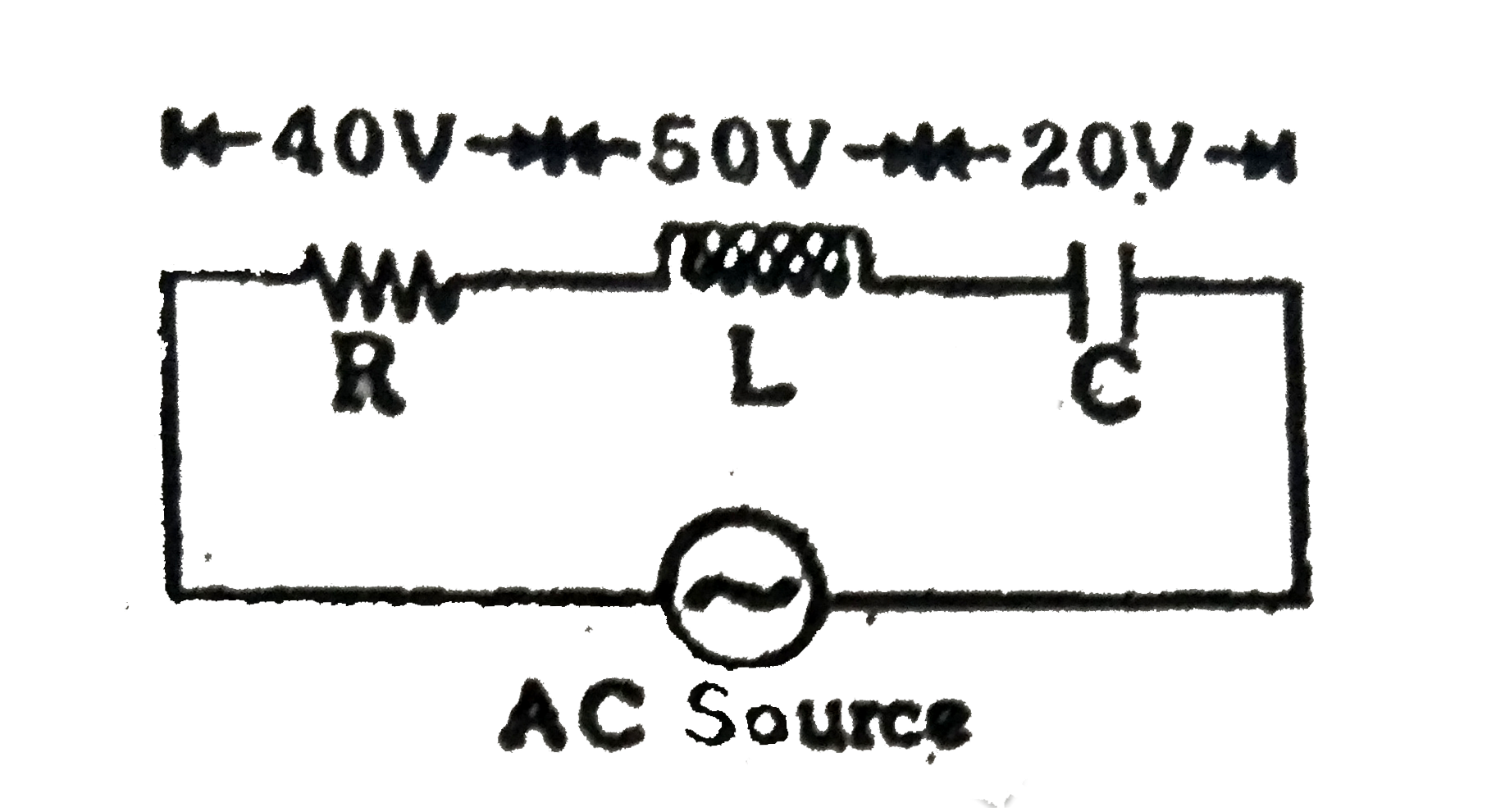In a series LCR circuit, the voltages across an inductor, a capacitor and a resistor are 30 V, 30 V, 60 V respectively. What is the phase difference between the applied voltage and the current in the circuit ?
60∘
30∘
90∘
0∘
The correct Answer is:D
To solve the problem, we need to find the phase difference (Φ) between the applied voltage and the current in a series LCR circuit, given the voltages across the inductor (V_L), capacitor (V_C), and resistor (V_R).
1. Identify the Given Values:
- Voltage across the inductor (V_L) = 30 V
- Voltage across the capacitor (V_C) = 30 V
- Voltage across the resistor (V_R) = 60 V
2. Understand the Relationship in LCR Circuits:
In a series LCR circuit, the phase difference (Φ) between the total voltage and the current can be found using the formula:
tan(Φ)=XL−XCR
where:
- XL = inductive reactance
- XC = capacitive reactance
- R = resistance
3. Relate Voltages to Reactances and Resistance:
The voltages across the components can be related to the current (I) as follows:
- VL=I⋅XL
- VC=I⋅XC
- VR=I⋅R
From the given voltages:
- XL=VLI=30I
- XC=VCI=30I
- R=VRI=60I
4. Substitute into the Tan Formula:
Substitute the expressions for XL, XC, and R into the tan formula:
tan(Φ)=30I−30I60I
Simplifying this gives:
tan(Φ)=060I=0
5. Find the Phase Difference:
Since tan(Φ)=0, it implies that:
Φ=0∘
Final Answer:
The phase difference between the applied voltage and the current in the circuit is 0∘.
---
- Voltage across the inductor (V_L) = 30 V
- Voltage across the capacitor (V_C) = 30 V
- Voltage across the resistor (V_R) = 60 V
In a series LCR circuit, the phase difference (Φ) between the total voltage and the current can be found using the formula:
tan(Φ)=XL−XCR
where:
- XL = inductive reactance
- XC = capacitive reactance
- R = resistance
The voltages across the components can be related to the current (I) as follows:
- VL=I⋅XL
- VC=I⋅XC
- VR=I⋅R
- XL=VLI=30I
- XC=VCI=30I
- R=VRI=60I
Substitute the expressions for XL, XC, and R into the tan formula:
tan(Φ)=30I−30I60I
Simplifying this gives:
tan(Φ)=060I=0
Since tan(Φ)=0, it implies that:
Φ=0∘
The phase difference between the applied voltage and the current in the circuit is 0∘.
Similar Questions
Knowledge Check
In a series LCR circuit the voltage across an inductor, capacitor and resistor are 20 V, 20 V and 40 V respectively. The phase difference between the applied voltage and the current in the circuit is
A30∘B45∘C60∘D0∘Phase difference between voltage and current in a capacitor in an ac circuit is
AπBπ/2C0Dπ/3In series LCR circuit, the phase angle between supply voltage and current is
Atanϕ=XL−XCRBtanϕ=RXL−XCCtanϕ=RXL+XCDtanϕ=XL+XCR
In a series resonant circuit, the ac, voltage across resistance R, inductance L and capacitance are 5V, 10V and 10V, respectively. The ac. voltage applied to the circuit will be
View SolutionIn series LCR circuit, the phase difference between voltage across L and voltage across C is
View SolutionIn an LCR series ac circuit the voltage across L,C and R are V1,V2 and V3 respectively The voltage of the source is .
View SolutionIn series LCR circuit, the voltages across R, L and C are shown in the figure. The voltage of applied source

View SolutionIn a series LCR circuit, the phase difference between the voltage and the current is 45∘. Then the power factor will be
View Solution
